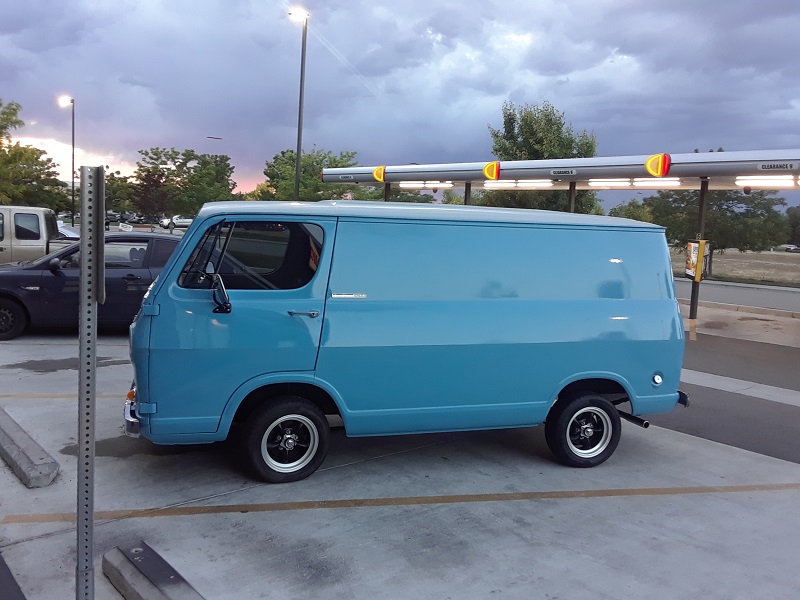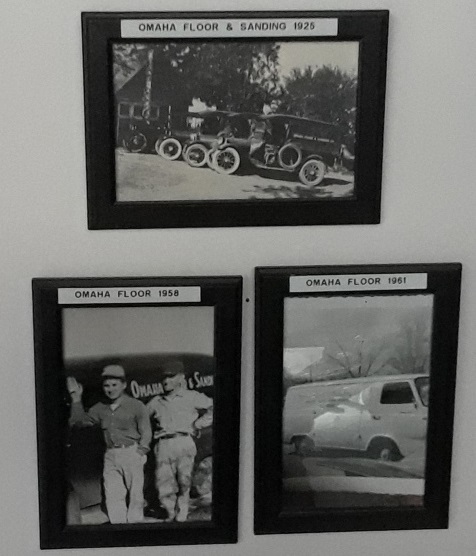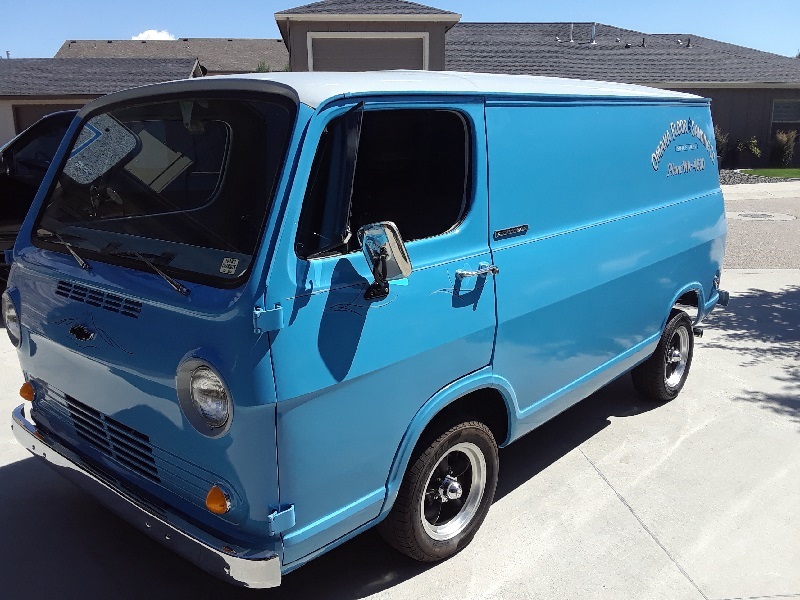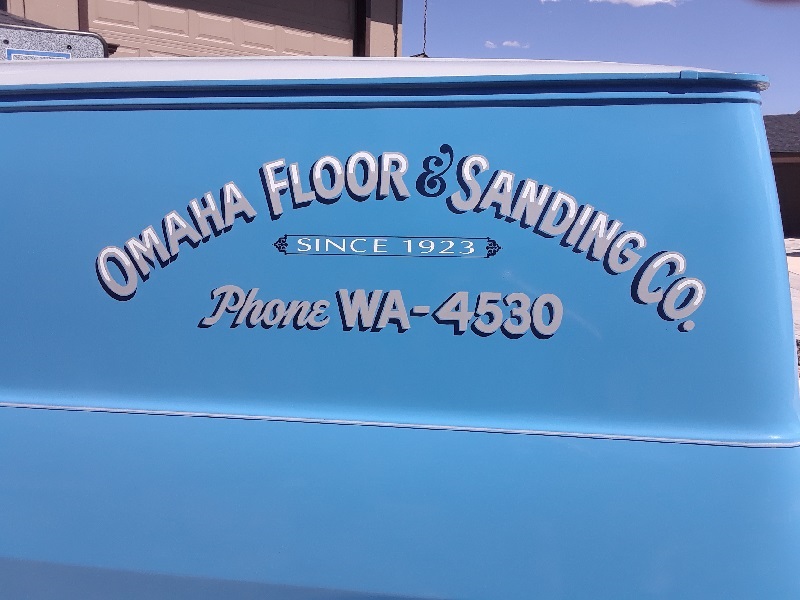For Fan Car Friday this week we bring you Doug and his clean 1964 Chevrolet G10 Panel Van. Fan Car Friday is a segment where we want to share with the world the automobiles that our fans have. We have absolutely no affiliation/relationship with the cars, the build or the owners. This post was made with written consent from the owner.

“My Dad took over the family business from my Great Grandfather after returning from a stint with the US Navy after WWII. We always had panel trucks around because the shop was next to our house, and Dad was the Chief Mechanic.
I found this 1964 Chevy G10 Panel Van in Boise, Idaho just a few miles from where I live. The owner said it wasn’t for sale, but I kept bothering him until he admitted that he really had no plans for it.
It was very straight, no huge rust issues, and pretty simple mechanicals. I wanted to make a tribute van to my Dad/Granddad. Found a 250 cu.inch in line 6 to overhaul and replace the rather anemic 194. Rebuilt the tiny three speed Muncie, and retained the three-on-the-tree linkage. Some new glass, upholstery, paint and body work, brakes, fuel system purge, weather stripping, and an electrical overhaul. Turned out to be about a four year project Managed to get a few hundred miles on it before Winter set in.
Dad liquidated in 1965 when wall-to-wall carpet was all the rage, and folks were covering up the hardwood. Both Dad and Granddad are gone, but I am sure they would like the Van.”

The Chevrolet and GMC G-series vans were made by General Motors for North America. They are in the same vehicle class as the discontinued Ford E series and Dodge Ram van.
The term Chevrolet van also refers to the entire series of vans sold by Chevrolet. The first Chevrolet van was released in 1961 on the Corvair platform, and the latest Chevrolet van in production is the Chevrolet Express.
The G20 and its counterparts replaced the original Chevrolet Corvair Greenbrier Van which was manufactured until 1965. First fielded in the mid-1960s, the model line evolved until it was replaced in 1996 by the Chevrolet Express. 1964-70 G20s came with six-lug wheels (6 lugs – 5.5″ (139.6 mm) bolt circle), while the 1971–1995 generation came with the 5 lug – 5″ (127 mm) bolt circle.
G20s were fitted with the ball joints from the Chevrolet/GMC ¾- and 1-ton pickups although using the ½ ton pickup’s brake rotors.
A light duty version, the G10, was produced alongside the G20—the early versions used the Chevrolet passenger car wheels (5 lugs – 4.75″ (120.7 mm) bolt circle) until 1975 (G10s manufactured prior to the 1976 model year had the smaller bolt pattern, common with the short wheelbase vans), yet can still handle LT tire sizes for better handling and stability. The G20 series sported an SB 262 4.3L engine, not much was changed mechanically in the vehicles since their release, other than carburetor to a throttle body injection fuel system, and less use of a vacuum system. Currently there are more after market part options available for its V8 counterparts. Not much has been done in the lines of performance options for the small V6 G20 models, but the reliability remains the same throughout all the G-series models.
The G20’s low cost of upkeep, size, and options have made this van popular with all different kinds of trades, from plumbers to caterers.

First-generation Chevy van refers to the first G-10 half-ton production years 1964 through 1966. General Motors saw a market for a compact van based on a modified passenger car platform to compete with the already successful Ford Econoline and Dodge A100. The 1964 Chevyvan had a cab forward design with the engine placed in a “doghouse” between and behind the front seats. The implementation of situating the driver on top of the front axle with the engine near the front wheels is called internationally a “cab over” vehicle. Engines and brakes were sourced from the Chevy II, a more conventional compact car than Chevrolet Corvair. This model was also sold by GMC as “Handi-Van”. The 1st Gen vans were available in only the short 90-inch wheelbase and were only sold with the standard 90 hp 153-cubic-inch straight-4 or Chevrolet Straight-6 engine. A first gen is quickly identified by its single piece flat windshield glass. The first 1964 Chevyvan was originally marketed and sold as a panel van for purely utilitarian purposes. Windows were available as an option, but were simply cut into the sides from the factory. In 1965, Chevy added “Sportvan”, which featured windows actually integrated into the body. GMC marketed their window van as “Handi-Bus”. Air conditioning, power steering and power brakes were not available in the 1st generation vans.
The original “classic” flat windshield van. The 90 hp (67 kW) 153 cu in (2.51 L) four-cylinder engine was standard equipment with optional 120 hp (89 kW) 194 cu in (3.18 L) Chevrolet Straight-6 engine available. The straightforward construction and a boxy design was ideal for economically hauling cargo, tools and equipment around town. The base cargo model was the Chevyvan, available with or without windows and side cargo doors. Even the heater and right front passenger seat were optional. The Warner 3-speed manual transmission was standard with column shift. A 2-speed Powerglide automatic transmission was available as an option.
https://en.wikipedia.org/wiki/Chevrolet_van

Want your car to be featured as one of our Fan Car Friday’s post? Know somebody that might? Use the contact link at the bottom and email us a couple of photos as well as your contact information and your vehicle could be featured on an upcoming Friday post. Please make sure to put FAN CAR in the subject heading.
Sweet AMERICANA !!!!
What a great tribute to family heritage!
Great family heritage!
I’ve watched Doug “sweat bullets” over the restoration of this van, but the end results are: he had fun, learned a lot and did a beautiful job.
Thanks, Mack. Wallet sweat a bit, too.
Beautiful and meaningful , great work
Doesn’t surprise me a bit, about the meticulous dedication Doug puts into a project and the end results. Nostalgia never looked better, and for the wallet taking a hit I’m sure Doug came back to Omaha and Doug up (a play on words) one of his 55 gallon drums to finance the project.
Actually, I like to use quart fruit jars. Don’t spend it so fast that way. Thanks, Ron.